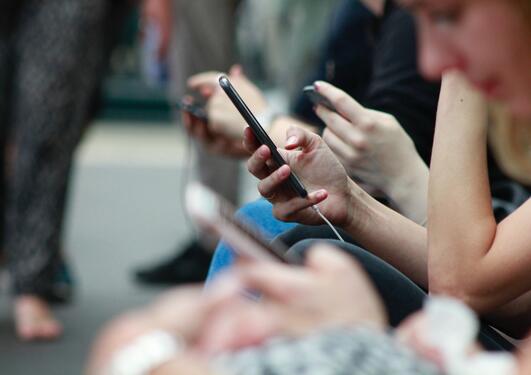Emotional response and mental distancing from social media
Digital disconnection isn’t just a physical act. For youth, affective reactions play an important part in how they deal with their digital connectivity.

Main content
»You’re always supposed to be available. I never really get a break from social media, even though it’s precisely the constant connection that I want to avoid, for sure.» Sumera (18)
In her book chapter “I feel like a peasant among goddesses”: Digital disconnection as affect and process among Norwegian youth (2024), researcher Mehri Agai explores how the concept of affective dissonance is useful for understanding they way youth deal with digital disconnectivity.
People increasingly question their reliance on digital technologies, and the concept of disconnection has gained a lot of traction over the past years. But who is actually able to log off, for whom is it important, and how do they manage disconnectivity in their everyday lives?
«Once I’ve done that [turned off the phone], it feels really good to let go of all the hassle that comes with social media. But, it can get lonely.» Sarah (17)
As part of her doctoral project, Agai has done in-depth interviews with Norwegian youth about digital disconnection. Exploring how they react to invasive connective media, she finds that affective (emotional) reactions to digital impulses are an integrated part of young people’s daily management of digital connectivity. The experiences may be negative – Sarah (17) describes how “I get all scrambled in the head when notifications come from every direction and so many friends are waiting for my response – but these experiences don’t necessarily lead to physical disconnection practices.
From young people’s perspectives, digital disconnection not only involves being physically separated from connectivity but also encapsulates attitudinal shifts and mental distancing.
“I’ve become quite aware of my aimless mobile use, though it hasn’t led to me using my phone any less. The only difference is now I’m quite mindful of the moments when I feel the urge to check my screen for new messages.” Mathilda (17)
Based on these findings, this book chapter posits that disconnection is also an affective state that does not necessarily transform into action or practice, but is as much about the potentiality to act. This chapter thus recognises digital disconnection as a process based on youths’ perspectives, acknowledging its affective facet, and contributing to a broader conceptualisation of disconnectivity beyond acts and practices.



